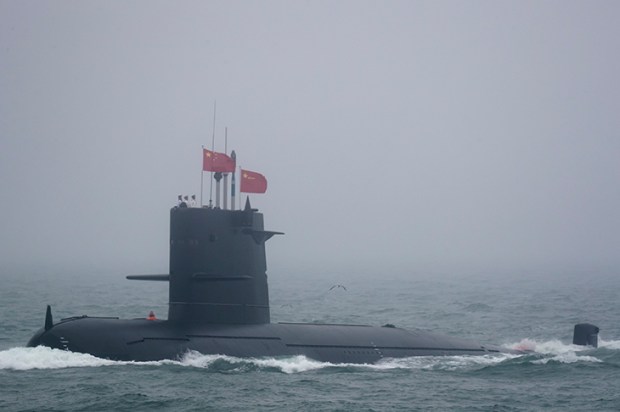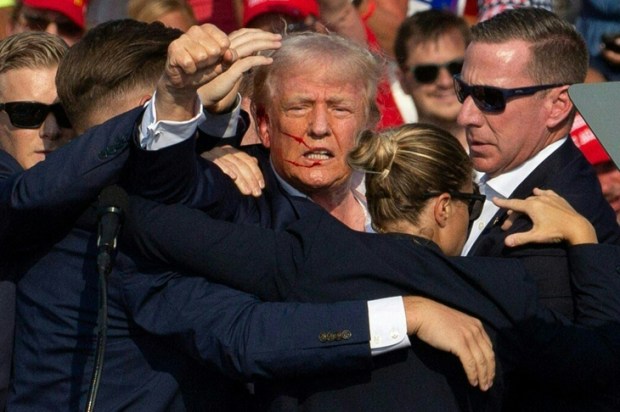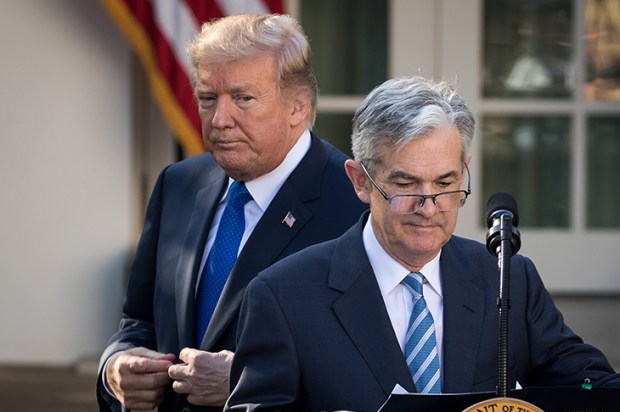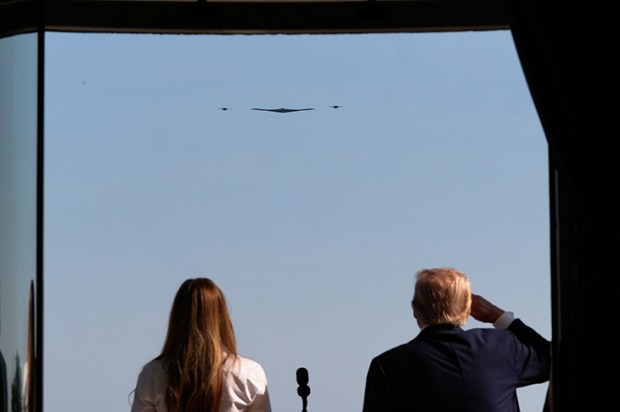Many commentators have already concluded that President Trump’s behaviour towards allies and friends now makes the United States an unreliable security partner. But if the result is that US allies take responsibility for their own security and invest more in defending themselves, the view of many Americans would no doubt be ‘about time’.
It is far too early to declare that the era of alliances like Nato or Anzus is over or that the United States has completely turned to isolationism. And there is much Australia can do to shape events, which we are currently not doing given Prime Minister Anthony Albanese has not visited the new President, nor seems able to get him to answer his calls. But it is undeniable that it feels like we may be on the cusp of a major shift in world affairs, the consequences of which have not yet been fully grasped.
In the 1960s, any nation that took seriously the call to ‘take responsibility for their own security’ would have sought to acquire nuclear weapons, as quickly as possible.
By the late-1960s there were five countries with nuclear weapons (the United States, the Soviet Union, the United Kingdom, France and China). It has been largely forgotten now, but many other countries were trying to join them. Nuclear weapons seemed to be the best bet for defending national sovereignty because their awesome power could deter any existential threats. Several European countries had nuclear weapons programs, as did Brazil, Argentina, Taiwan, even Australia. Based on the trajectory the world was on it seemed likely that as many as 20 or 30 countries might soon join the nuclear club.
But the United States and others saw such proliferation as an international security risk. The solution was the 1968 Treaty on the Non-Proliferation of Nuclear Weapons, or NPT. The terms of the NPT were that only the five then-existing nuclear weapon states were allowed to have nuclear weapons, and no others. This would put the non-nuclear weapon states at a permanent military disadvantage, so why did they agree?
In the case of many Western nations, the views of the United States held considerable authority. If Uncle Sam wanted us to sign, we would sign.
But it was more than American influence alone, it was also American promises.
The contemporaneous United Nations Security Council Resolution 255 (1968) required that all nuclear weapons states would ‘provide or support immediate assistance’ to any non-nuclear weapons state if they were a victim of aggression in which nuclear weapons were used. In other words, you don’t need nuclear weapons, because we will defend you from nuclear attack. In practice, for many countries, this meant relying on the United States.
The NPT was not entirely successful. India, Pakistan, Israel and North Korea have all joined the nuclear club (officially or unofficially) and so did South Africa, albeit temporarily. But compared to the likelihood of dozens of countries with nuclear weapons, the NPT has been a success and a central pillar of American foreign policy.
But if, as some claim, the United States is no longer a reliable security partner, then the promises made at the time of entering the NPT, which were reaffirmed in UN Security Council Resolution 984 (1995), must similarly be considered dubious. And if a country heeds the call to ‘get serious’ about its own defence, and feels isolated and bereft of allies, then nuclear weapons might be considered a viable option. Especially considering the current global security environment. Ukrainians probably don’t feel they benefited from giving up the nuclear arsenal they inherited upon the collapse of the Soviet Union, nor is it easy to conclude that Taiwan was right to give up its nuclear weapons program, now that it faces intimidation from China.
The ‘free riding’ of allies on the back of the American defence budget is a form of learned helplessness that previously benefited both the United States (in terms of influence) and its allies (in terms of reduced defence expenditure) but has long since passed its use by date. But suddenly reversing this policy might have many unintended consequences. We are only ten weeks into Trump’s second term, and diplomats along with everyone else are frantically trying to keep up with events. Nobody is yet thinking about arcane issues like nuclear proliferation. But if we truly have entered a post-alliance era in which American security guarantees can no longer be relied upon and we are all, including Australia, on our own, at some stage other fundamental aspects of the international security framework, like the NPT, will also be revisited.
For Australia the lesson in this is clear. We can no longer afford to be a passive bystander to global events, nor expect to be able to endlessly ride the American defence train on the cheap. If we do, we risk pushing the United States further towards isolationism and leaving ourselves defenceless. Yet based on this week’s federal budget, that is precisely what the Albanese government is doing.
Although the budget includes the highest level of spending as a percentage of GDP in 40 years, there were no new defence spending announcements. As has been previously announced, the defence budget is set to increase by $50 billion over ten years, but only $10.6 billion of that will be spent within the forward estimates. The rest of the planned spending is just a vague promise, susceptible to the whims of future treasurers. Yet even if these spending commitments are honoured, Australia’s spending on defence will only rise by the early 2030s to 2.3 per cent of GDP.
The current average global defence spending on defence is 2.35 per cent of GDP according to latest figures. Most high-income countries invest more on defence (the OECD average is 2.42 per cent of GDP). So, at the same time that the Trump administration, our most important ally, is demanding allies spend 3 to 5 per cent of their GDP on their own defence, it will be nearly a decade before Australia even reaches today’s current global average.
This budget sends a terrible signal to Washington that we are not serious about our own defence, and we are willing to bet we can keep free riding on the US alliance indefinitely. It also signals to Beijing that, despite the most provocative naval activity in our region since the second world war, we are weak and intend to do nothing to change that. This is the worst possible outcome for Australia, irritating our ally whilst emboldening and failing to deter our foe. It also means we can expect to exert zero influence in whatever new form the global security framework might take.
After the next federal election, action item number one for whoever is the prime minister should be to get on a plane to Washington. Item number two should be to begin the process of turning around the parlous state of our national defences.
Got something to add? Join the discussion and comment below.
John Storey is the Director of Law and Policy at the Institute of Public Affairs and author of ‘Big Wars - Why do they happen and when will the next one be?’
You might disagree with half of it, but you’ll enjoy reading all of it. Try your first month for free, then just $2 a week for the remainder of your first year.












